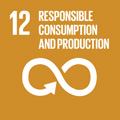- Docente: Marcella Terrusi
- Credits: 6
- SSD: M-PED/02
- Language: Italian
- Teaching Mode: In-person learning (entirely or partially)
- Campus: Rimini
- Corso: First cycle degree programme (L) in Fashion Cultures and Practices (cod. 9064)
Learning outcomes
At the end of the course student is expected to acquire: 1. Main international themes of discussion in the debate about cultures of childhood and on educational models and patterns. 2. History of childhood, through the lens of cultural representations, research about the concept of childhood, practices and discussion about neoteny (human characteristic of childhood maintenance). 3. Finding your way in the network of stories, representations, images of childhood and becoming able to produce original critical paths thorough a wide range of themes of the collective imagination, life and knowledge: sport, fashion, health, travel. 4. Contemporary international children publishing and its design and thematical possibilities, with regards for themes quoted at the point 3 and for visual literature, picture books and silent books.
Course contents
The course offers a reflection on fashion and costume in relation to childhood. The teaching proposal makes use of the comparison and discussion of different texts: selected illustrated albums in international children's publishing; historical-critical contributions on the history of thread, graphic motifs such as stripes, and reflections on the historical-pedagogical relations between fashion and childhood. Illustrated biographies of fashion and costume icons (from Coco Chanel to Pippi Longstocking, Audrey Hepburn to Vivienne Westwood), fairy-tale rewrites, popular volumes devoted to the history and grammar of clothing, original visual experiments, exquisitely crafted papercraft creations, images that are born of embroidery, from research on textures, colors and shapes, works by illustrator-authors-designers who not infrequently design in the two spheres, that of children's publishing and that of fashion. The student will have the opportunity to meet, collectively discuss and study books that simultaneously engage and represent childhood in the cultural discourse on fashion, valuable contributions to stimulate pedagogical, aesthetic, interdisciplinary reflection and invite an overview of major fashion issues through the lens of the best international children's publishing. The reference is to The Extraordinary Library project carried out by Bologna Children's Book Fair for Pitti Immagine Bimbo, and to an interdisciplinary shelf that welcomes critical, pedagogical discourses and history, between childhood, story thread, fabric and dress.
Readings/Bibliography
Testi fondamentali:
in Roberto Farnè, Marcella Terrusi, a cura di. Moda e Infanzia, ZoneModa Journal, Vol. 8 No. 2 (2018): Editoriale; Terrusi, Sola: Atelier Picturebook; Campagnaro: Accessoristica Fiabesca
Clare Hunter, I fili della vita. Una storia del mondo attraverso la cruna dell'ago, Bollati Boringhieri, 2019. Capitoli: Protezione; Legami
Michel Pastoureau, La stoffa del diavolo. Una storia delle righe e dei tessuti rigati, Il Nuovo Melangolo, 2007. Capitolo: Strane zebre.
Nicola Gardini, Le 10 parole latine che raccontano il nostro mondo, Garzanti. Capitolo: Lo stile.
Focus Infanzia e moda, Rivista Infanzia
5 albi a scelta nella bibliografia di riferimento o da concordare con la docente. La bibliografia dei 100 albi illustrati di The Extraordinary Library 2017 e degli altri albi visti a lezione è disponibile in selezione presso la Biblioteca del Campus di Rimini e nelle risorse su Virtuale. Gli studenti possono privilegiare una selezione di 5 albi seguendo il filo di: biografie, icone di stile, favoloso mondo della moda, fiabesco, filo, motivi (righe, pois, motivi culturali).
Approfondimenti facoltativi:
La storia: Rosita Levi Pisetzki, Il costume e la moda nella società italiana, Einaudi, 1978. Le sezioni dedicate all'abbigliamento infantile.
Gli albi illustrati: Marcella Terrusi, Meraviglie mute. Silent book e letteratura per l’infanzia, Carocci, 2017 - una selezione di 3 capitoli. Esempio: L'arte del libro senza parole; Visibile, invisibile: artemie, palloncini e memoria; Metamorfosi: sogno, viaggio, impermanenza e amore; Piccolo e grande poetico.
/ Marcella Terrusi, Albi illustrati. Leggere, guardare, nominare il mondo nei libri per l’infanzia, Carocci, 2012 - una selezione di paragrafi legati alla struttura e al linguaggio degli albi.
Il mondo della moda bambino: Flavia Piccinni, Bellissime. Baby miss e aspiranti lolite, Fandango, 2017
Teaching methods
The course includes lectures set up mostly in a dialogical manner, in which they collectively read and discuss illustrated books from the international selection through direct reading, video projection and attending the thematic shelf in the campus library. Students are also invited to work on their own biography as readers, memories of childhood and clothing, and the construction of the gaze. There is no shortage of pedagogical insights to the history of children's literature, with a focus on images, and the history of children's fashion. Students are encouraged to compile a research journal to explore their own relationship with fashion and clothing from childhood memories, and document the course through notes and collection of images.
Assessment methods
The final exam consists of an interview with the lecturer during which the student demonstrates knowledge of the reference texts and personal elaboration of suggestions from the course.
The student also presents a selection of 5 illustrated albums, to be linked in a personal and critical manner, with constant reference to the texts in the bibliography.
In particular, he/she may submit (not required) a personal diary of the research or the course, in a form of his/her choice, which will serve as a pretext for discussion of the learnings and reflections arising from the course and the referenced critical bibliography.
The student will be expected to have a thorough knowledge of the key texts in the bibliography.
Teaching tools
The international collection of picture books relating to the fashion and style project is can be entirely consulted at the Rimini Campus Library. The teacher also reserves the right to provide study material also available in electronic format.
Office hours
See the website of Marcella Terrusi
SDGs




This teaching activity contributes to the achievement of the Sustainable Development Goals of the UN 2030 Agenda.
